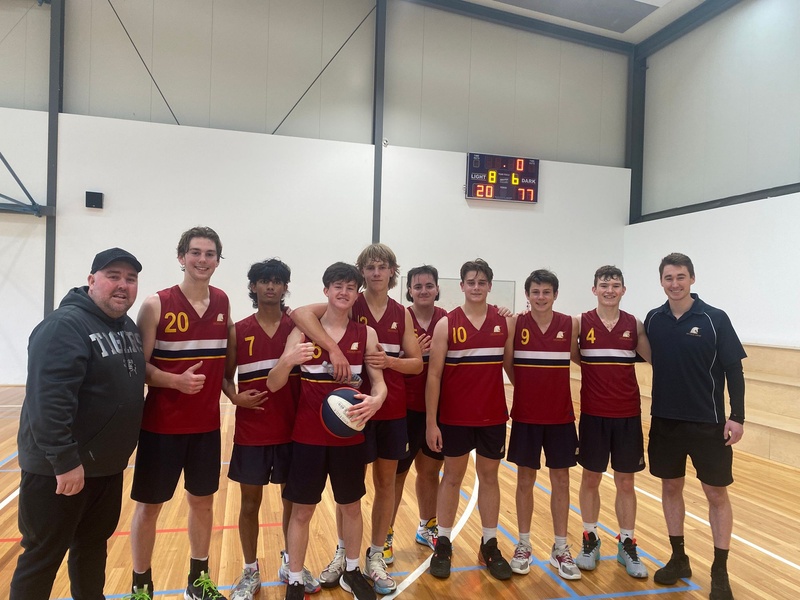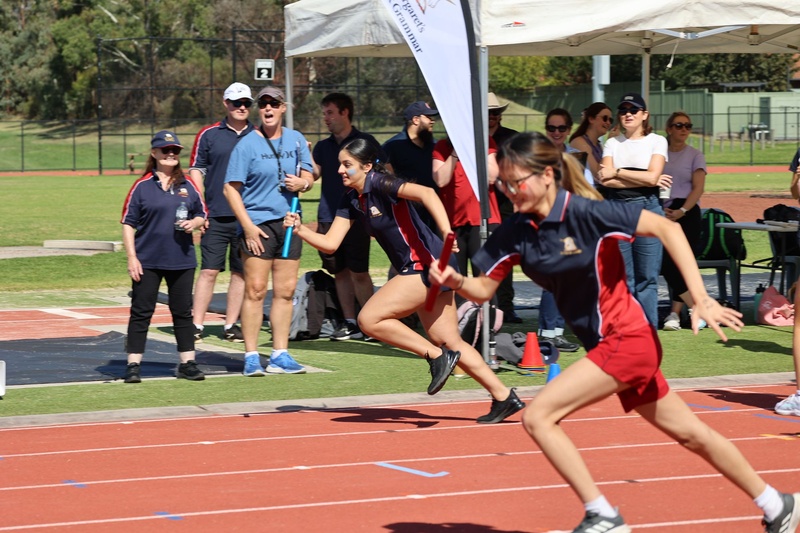The study of VCE Physical Education allows students to practice and apply knowledge pertaining to anatomy, physiology, physical activity participation and performance. Students study human physiology including, structure, function and practices relating to the musculoskeletal and cardiorespiratory systems.
Students develop understanding of physical activity, sport and society from a participatory perspective, including enablers and barriers to physical activity and ways in which participation in physical activity can be extended in various communities, social and contexts.
VCE Physical Education allows students the opportunity to participate in a range of physical activity opportunities aimed at applying theoretical concepts, including class-based sport and exercise, incursions and excursions that promote understanding of areas such as anatomy and physiology, performance enhancement, community physical activity participation and opportunities.
The application of theoretical understanding and practice is central to the study of VCE Physical Education. Through a range of theoretical and practical application settings, students are introduced to biomechanical and skill acquisition principles used to analyse human movement skills as well as investigating the physiology of and contribution of energy systems in energy production and strategies used to postpone fatigue and promote recovery.
Students apply and evaluate knowledge and understanding of fitness training methods and consider the physiological, psychological and sociological requirements of training to design and evaluate an effective training program. Improved fitness and the evaluation of the chronic adaptations to training from a theoretical perspective is also undertaken.
Students are afforded opportunities to apply theoretical knowledge via participation in a range of state of the art biomechanical, activity data analysis and physiological testing laboratory-based activities.
The human body in motion
In this unit, students explore how the musculoskeletal and cardiorespiratory systems work together to produce movement. Students investigate the role and function of the main structures in each system and how they respond to movement. Through participation in practical activities, students explore and analyse the relationships between the body systems and movement, and how these systems interact and respond at various intensities. Students investigate possible conditions and injuries associated with the musculoskeletal system and recommend and implement strategies to minimise and manage such injuries and conditions. They consider the ethical implications of using permitted and prohibited practices to improve the performance of the body systems, evaluating perceived physiological benefits and describing potential harms.
Physical activity, sport and society
This unit develops students’ understanding of physical activity, sport and exercise from a participatory perspective. Students are introduced to types of physical activity and the role that physical activity participation and sedentary behaviour plays in their own health and wellbeing, as well as in other population groups and contexts.
Through a series of practical activities, students experience and explore different types of physical activity promoted within and beyond their community. They gain an appreciation of the movement required for health benefits and the consequences of physical inactivity and sedentary behaviour. Using various methods to assess physical activity and sedentary behaviour, students analyse data to investigate perceived barriers and enablers, and explore opportunities to enhance participation in physical activity. Students explore and apply the social-ecological model to critique a range of individual- and settings-based strategies that are effective in promoting participation in regular physical activity. They create and participate in a personal plan with movement strategies that optimise adherence to physical activity and sedentary behaviour guidelines.
By investigating a range of contemporary issues associated with physical activity, sport and exercise, students explore factors that affect access, inclusion, participation and performance. Students then select one issue at the local, national or global level and analyse key concepts within the issue, including investigating, participating in and prescribing movement experiences that highlight the issue.
Students develop an understanding of the historical and current perspectives on the issue and consider the future implications on participation and performance.
Movement skills and energy for physical activity
This unit introduces students to principles used to analyse human movement from a biophysical perspective. Students use a variety of tools and coaching techniques to analyse movement skills and apply biomechanical and skill-acquisition principles to improve and refine movement in physical activity, sport and exercise. They use practical activities to demonstrate how correctly applying these principles can lead to improved performance outcomes.
Students consider the cardiovascular, respiratory and muscular systems and the roles of each in supplying oxygen and energy to the working muscles. They investigate the characteristics and interplay of the 3 energy systems for performance during physical activity, sport and exercise. Students explore the causes of fatigue and consider different strategies used to postpone fatigue and promote recovery.
Training to improve performance
In this unit, students’ participation and involvement in physical activity will form the foundations of understanding how to improve performance from a physiological perspective. Students analyse movement skills and fitness requirements and apply relevant training principles and methods to improve performance at various levels (individual, club and elite).
Improvements in performance, in particular fitness, depend on the ability of the individual and/or coach to gain, apply and evaluate knowledge and understanding of training. Students assess fitness and use collected data to justify the selection of fitness tests based on the physiological requirements of an activity, including muscles used, energy systems and fitness components. Students then consider all physiological data, training principles and methods to design a training program. The effectiveness of programs is evaluated according to the needs of the individual and chronic adaptations to training.

Selection advice
What kind of learner is best suited to study this subject?
Kinaesthetic learners are suited to this subject as well as students who enjoy the opportunity to apply theoretical learning in real world settings and activities. Students interested in anatomy and physiology, how the body systems work and physical activity, sport and society from a participatory perspective enjoy the subject. An interest/understanding of Science would be helpful.
What key skills are required for success?
Application of knowledge that specifically addresses practical situations, consistent revision of content and terminology and
What are three most engaging topics studied?
Unit 1 & 2: Body Systems, Performance Enhancement and Enablers and Barriers to Physical Activity
Unit 3 & 4: Biomechanics, Energy Systems, Chronic (Long Term) Adaptations to Exercise
What are the learning activities in this subject like?
Practical and laboratory applications, research, concept mapping, content focus and interaction, critical thinking and communication and interactivity activities

Student perspective
What advice would you give to a student about to embark on this subject?
A positive attitude is essential for success in Physical Education. Approach the subject with an open mind, a willingness to learn, and a commitment to give your best effort. There is a blend of theory based content and practical activities to reinforce the learning. Pay attention to the theory. Whilst it is important that we use physical activity to apply our knowledge; reports, reflections and questions are theoretical in nature. Keep detailed organised notes on the different Key Knowledge areas of each topic and complete as many practice questions as possible before assessment tasks.
What students say
PE is an exciting subject studying a number of areas such as human anatomy, physiology and sports psychology as well as looking at movement principles, improving fitness and influences on performance and participation in physical activity. I’ve particularly enjoyed insight into our body systems and how they work. PE is great because the theory work covered is applicable to so many physical activity, exercise and sporting situations. Whether you’re interested in physical activity recreationally or you’re an elite athlete, you will enjoy your PE studies as we apply learning through several fun and interesting activities.
Catelyn Van Es – Class of 2023
Studies in VCE Physical Education can lead to study and career options in the following areas:
Vocational Pathways:
The study prepares students for employment and/or further study at the tertiary level or in vocational education and training settings in fields such as exercise and sport science, health science, education, recreation, sport development and coaching, health promotion and related careers.




